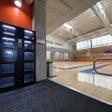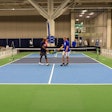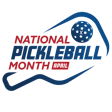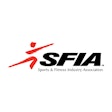Source: National Athletic Trainers’ Association
Dallas, October 27, 2014 – With high school football season fully underway, there remains a continued national discussion on youth sports safety and athlete awareness of signs and symptoms of concussion. A new Florida-based study, “Concussion Knowledge in High School Football Players,” indicates that despite efforts to improve concussion education among high school athletes and the passage of recent legislation and new protocols, those students questioned still did not have the appropriate knowledge of symptoms and consequences. The study is published in the September Journal of Athletic Training, the scientific publication of the National Athletic Trainers’ Association. To review the research, please visit: https://natajournals.org/doi/full/10.4085/1062-6050-49.3.34.
It is estimated that emergency departments see more than 300,000 patients each year for sport-related brain injuries and that 1.6 to 3.8 million concussions occur each year during sports and recreation, with half attributed to football. Additionally, research shows fewer than half of high school athletes are likely to report a concussion, and nearly 25 percent of collegiate football players participate in their sport while experiencing symptoms of a concussion.
Unreported or unrecognized concussions are particularly concerning in adolescents because they are more susceptible to concussion consequences than adults. Lack of knowledge and improper reporting and management of the injury can lead to increased risk of post-concussion syndrome and second impact syndrome. Post-concussion syndrome describes persistent symptoms after a concussion; second-impact syndrome occurs when the brain swells rapidly and catastrophically after a person suffers a second concussion before symptoms from an earlier one have subsided. Evidence suggests that young athletes, coaches and parents do not have the necessary knowledge to assess and manage concussions and make return-to-play decisions.
In 2012, with the passage of a youth sports safety concussion bill (House Bill No. 291), the Florida High School Athletic Association implemented a new concussion consent form that was mandatory for all parents and student athletes to sign before participating in an organized interscholastic sport; the form also required that athletes need to report to a licensed athletic trainer, coach or parent if they experience symptoms of concussion or suspect a teammate may be experiencing them.
That same year, researchers from the University of Florida surveyed 334 varsity football players from 11 high schools in the state to determine their level of knowledge about concussions. Participants had an average of 2.1 years of high school football experience and an average age of 16.3 years.
“Our results showed that high school football players did not have appropriate knowledge of concussion. Even with parents or guardians signing a consent form indicating they discussed concussion awareness with their child, nearly half of the athletes suggested they had not,” said Brady Tripp, PhD, LAT, ATC, who with Janie Cournoyer, MS, ATC, authored the study.
Participants completed a written questionnaire that included three sections specific to symptoms, outcomes and education. The most correctly identified symptoms were headache (97 percent); dizziness (93 percent); and confusion (90 percent). Participants reported receiving education from their parents (54 percent) or from a formal source either in class or online (60 percent). Twenty-five percent reported never receiving any concussion education at all.
Symptoms including nausea, vomiting, neck pain, grogginess, difficulty concentrating and personality or behavioral changes were often missed, and only a few student athletes correctly identified brain hemorrhage, coma, and death as possible consequences of inappropriate care, added Tripp.
The authors advocate concussion education as one of the main components of prevention and management and believe it would help athletes better detect symptoms and understand the consequences of not reporting their injury to a health care professional. Pre-participation meetings, instructional videos, demonstration of “Heads-Up” tackling and web-based programs are techniques that may prove useful, according to the authors. It is the role of the athletic trainers to be aware of their athletes’ level of knowledge, perform comprehensive evaluations on athletes suspected of concussion and never assume the athlete will necessarily self-report.
“Athletic trainers and others that make up a school’s sports medicine team should not assume programs available to coaches, parents and athletes will ensure education,” concludes Tripp. “We recommend they work closely with athletes to reinforce this important information and potentially reduce the incidence of concussion and the acute, chronic or potentially fatal circumstances that can occur.”
About NATA: National Athletic Trainers’ Association (NATA) – Health Care for Life & Sport
Athletic trainers are health care professionals who specialize in the prevention, diagnosis, treatment and rehabilitation of injuries and sport-related illnesses. They prevent and treat chronic musculoskeletal injuries from sports, physical and occupational activity, and provide immediate care for acute injuries. Athletic trainers offer a continuum of care that is unparalleled in health care. The National Athletic Trainers' Association represents and supports 39,000 members of the athletic training profession. Visit www.nata.org.






























